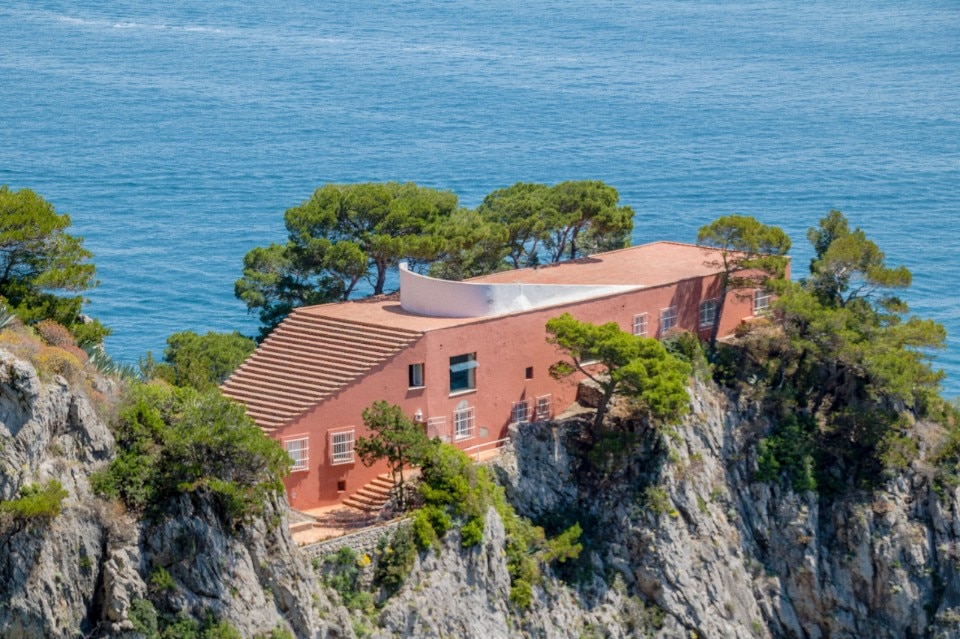If the Modern Movement makes one think of the house as a “machine à habiter” (a standardised product that can be reproduced at any latitude) and of volumes irradiated with light floating on punctiform structures, the connection between modernist architecture and the spontaneous and materic constructions of the Mediterranean takes on the contours of an oxymoron. A dichotomy that seems even more accentuated in a secluded context such as the islands, where infiltrations of novelty from the mainland are often regarded with suspicion and where, for geographical reasons, resources and supplies are local.
However, that the Mediterranean vernacular has been a source of inspiration for modern architectural language is demonstrated by the History of Architecture. It was Karl Friedrich Schinkel, at the beginning of the 19th century, among the first to appreciate and decode its characteristics, followed a century later by Joseph Hoffmann and Adolf Loos who, in the footsteps of the Grand Tour, “dragged‘’ architectural thought into the Modern Age by reinterpreting the Mediterranean tradition through the simplification of forms, chiaroscuro contrasts, the use of white and the rejection of any ornamentation (for Loos, equivalent to “ a “crime”).
Later, it was during his “Journey to the Orient” between Istanbul, Athens and Italy in 1911 that Le Corbusier matured the founding principles of his architecture, inspired by the elementary geometries in pure white, the flat roofs, the “ecstatic” dialogue with light of Mediterranean architecture.
A “voyage of discovery” (“not of new lands, but of new eyes”, as Proust would have said) that also fascinated the participants in the fourth Congrès Internationaux d'Architecture Moderne of 1933, who sailed from Marseilles on the steamer Patris II towards Greece for a maritime expedition in search of the origins of building, at the end of which Pietro Maria Bardi announced that “the house was born in the Mediterranean” (“Cronaca di Viaggio”, 1933).
If the common denominator between the Mediterranean vernacular and modernism is the need to solve functional needs even more than aesthetic ones (urban housing urgency on the one hand; shelter for men and animals from the fierceness of the sun and atmospheric agents in a rural context, on the other; cost control and efficiency, in both cases), the modernist declinations around Mare Nostrum, destined to be the scene of holiday seasons, however live by their own rules compared to the avant-garde spread elsewhere. Even though the rigour of the plan-volumetric layout betrays a rationalist imprint, the paradigmatic glass and steel constructions, the punctiform structures and light technologies of the Modern Movement are replaced by load-bearing plastic-masonry solutions, realised with solid and opaque natural materials found locally; the openings that nonchalantly filter the light of the northernmost latitudes leave the field to windows calibrated to control the sun's input; the juxtaposition and staggering of volumes derives from the orographic conformation of the site rather than from a planned compositional process.
The result is an architecture that, although free of mimetic attempts as in the best modernist tradition, manages to merge with apparent naturalness into the landscape in which it is located, regardless of the lexicon adopted: from the neat geometries that stand out vividly in the bush (Libera, Ricci, Ponti, Boeri, Bini, Ponis), to those that fade into the context like a-temporal dwellings that have always belonged to that place (Marco Zanuso, Tusquets Blanca, Vietti, Couëlle).
Opening image: Villa Malaparte, photo romanple on Adobestock

Accademia Tadini on Lake Iseo reborn with Isotec
Brianza Plastica's Isotec thermal insulation system played a key role in the restoration of Palazzo Tadini, a masterpiece of Lombard neoclassical architecture and a landmark of the art world.

























